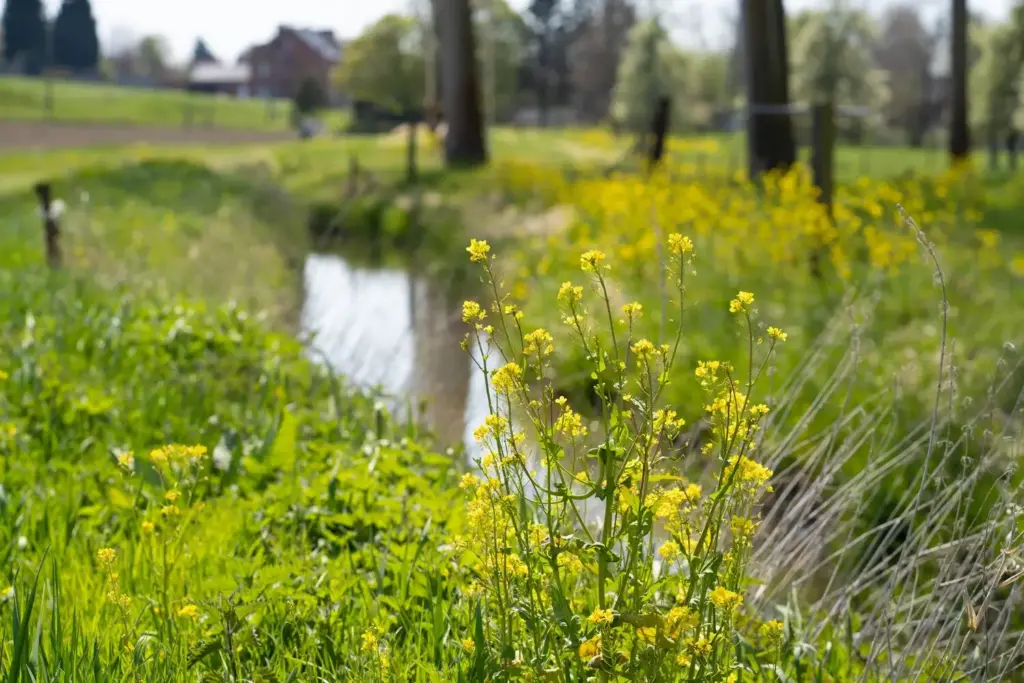Gardening
Is Your Yard Disaster-Ready? 5 Projects to Help Protect Your Home

Nearly half of American homes are at severe or extreme risk of experiencing at least one type of climate-related natural disaster, according to the 2024 http://Realtor.com Housing and Climate Risk Report. Homeowners face threats from floods, hurricane winds, wildfires, extreme heat, and hazardous air quality. Is Your Yard Disaster-Ready? 5 Projects to Help Protect Your Home. These disasters can be devastating to both families and properties, with costly repairs and rebuilding efforts required in their aftermath.
Taking proactive steps to create a disaster-ready yard can help protect your home and minimize potential damage. Implementing these five essential landscaping and hardscaping projects can improve your property’s resilience and increase its safety during extreme weather events.
1. Install Permeable Pavers for Flood Prevention

Adding hardscape features like concrete patios can increase water runoff and erosion, but using permeable materialshelps water drain naturally into the soil. According to the Environmental Protection Agency, materials such as pervious asphalt, interlocking pavers, pervious concrete, gravel, mulch, and plastic grid pavers allow rain and snowmelt to absorb into the ground. This reduces the burden on storm drains, minimizes water pooling, and helps prevent flooding and water damage after heavy rainfall.
2. Create a Landscaping Windbreak

Strategically placing trees, bushes, and shrubs around your property can reduce wind speed and protect against strong gusts. A well-designed windbreak can decrease wind velocity by up to 30 times the height of the trees. This not only safeguards your home but also lowers heating costs by reducing wind chill.
For an effective windbreak, plant low-crown evergreens and deciduous trees, such as Eastern red cedar, Arizona cypress, Ponderosa pine, Sycamore, and Chinese elm. Position the windbreak at least one to two tree heights away from your home, ensuring they do not interfere with power lines.
3. Build a Retaining Wall for Erosion and Flood Control
A retaining wall made from reinforced concrete, gabion, stacked stone, brick, or steel helps redirect rainwater and stabilize soil. This prevents flooding, basement leaks, and other types of water damage.

Retaining walls are particularly useful for homes on sloped terrain, where soil erosion can contribute to flooding risks. Additionally, a well-designed retaining wall adds curb appeal while providing long-term structural protection. Due to the complexity of installation, hiring a professional is recommended.
4. Firescape Your Yard to Create a Defensible Space
For homeowners in wildfire-prone areas, firescaping is a crucial landscaping technique to reduce fire hazards. A defensible space consists of multiple zones that slow the spread of flames and create areas where firefighters can safely operate.
- Zone 0 (0-5 feet from home): Keep this area free of dead plants and combustible materials. Use nonflammable hardscaping like gravel or decorative rocks instead of mulch.
- Zone 1 (5-30 feet from home): Plant low-growing, less-dense shrubs like azaleas and boxwoods. Keep trees at a safe distance from your house.
- Zone 2 (30-100 feet from home): Maintain wide pathways, thin out vegetation, and remove excess debris to create natural firebreaks.
5. Add a Rain Garden for Natural Drainage
A rain garden is an effective way to manage stormwater runoff while enhancing your yard’s appearance. Designed with layers of soil, mulch, and deep-rooted native plants, rain gardens help slow the flow of water, allowing it to seep into the ground instead of pooling near your home.
This prevents foundation damage, minimizes flooding, and reduces strain on storm drains. Rain gardens incorporate trees, grasses, ground covers, and shrubs for both functionality and aesthetics.
Final Thoughts
Taking proactive steps to protect your yard from climate-related disasters is a smart investment for any homeowner. By incorporating permeable pavers, windbreaks, retaining walls, defensible spaces, and rain gardens, you can significantly enhance your home’s resilience to extreme weather. These practical improvements not only safeguard your property but also contribute to a more sustainable and disaster-ready landscape.

